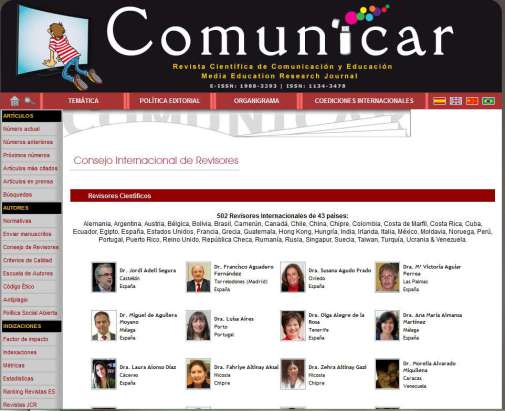Author: Ignacio Aguaded – Translation: Erika-Lucia Gonzalez-Carrion
Scientific journals of international prestige have as their maxims the rigor, punctuality and transparency of all their processes, so that they generate confidence in the scientific community that has access to the studies and research that are published, as well as the researchers who decide to present their work on them.
All scientific journals already have “norms for authors” which, contrary to popular opinion, are more valuable the more standardized they are and the less “singularities” they generate for authors who travel from one publication to another. High-level scientific journals share common standards that make it easier for authors and readers to understand their manuscripts. Rather than curtailing, it is a question of not wasting researchers’ time on formal issues and really focusing on the novel and original contributions that the works must necessarily contain in this type of journals.
In addition to the rules for authors, prestigious journals, such as “Comunicar” , have a “norms or guidelines for reviewers“, the scientific community on which the evaluation pivots Blind version of the manuscripts and which is an essential element for structuring scientific progress through periodical publications.
The norms or guidelines for reviewers must be public and known not only by these but also by readers and, above all, authors, because, in the interests of transparency and objectivity, the entire scientific community has to agree on the parameters which govern the evaluation of the manuscripts and the criteria that determine the selection of some in front of others, in an always high competitiveness for which, consequently, the authors demand reliability in the process.
The regulations for reviewers ensure the application of universal and uniform criteria for all reviewers who endorse revisions adjusted by criterion and not discretion, regardless of the contextual variations that are so transcendental in Social Sciences.
High-level journals also, by virtue of that transparency and objectivity, which should be their north and their beacon, publish the complete list of all their reviewers, their templates and affiliations, so that their number and curriculum as the diversity of institutions, countries … are a first-class anti-inbred guarantee and an efficient test of the prestige of the publication. “Comunicar” currently has 500 reviewers from 42 countries, with the most detailed institutions in the world on the subject. In its section “Reviewers Council” we can see the wide and varied list of researchers from around the world who collaborate on manuscript revision processes , but also their involvement in each issue, The indications for reviewers (normative), an explanatory video and also the files / protocols of the different sections that are used to review and that are of public audience.
A final recommendation for authors! Knowing the review sheets, the guidelines for evaluating the manuscripts and even the list of reviewers will undoubtedly allow us to better adjust the format of our research to be successful in this type of high-level scientific journals that are not only demanding In the content but also in the entire presentation format.

